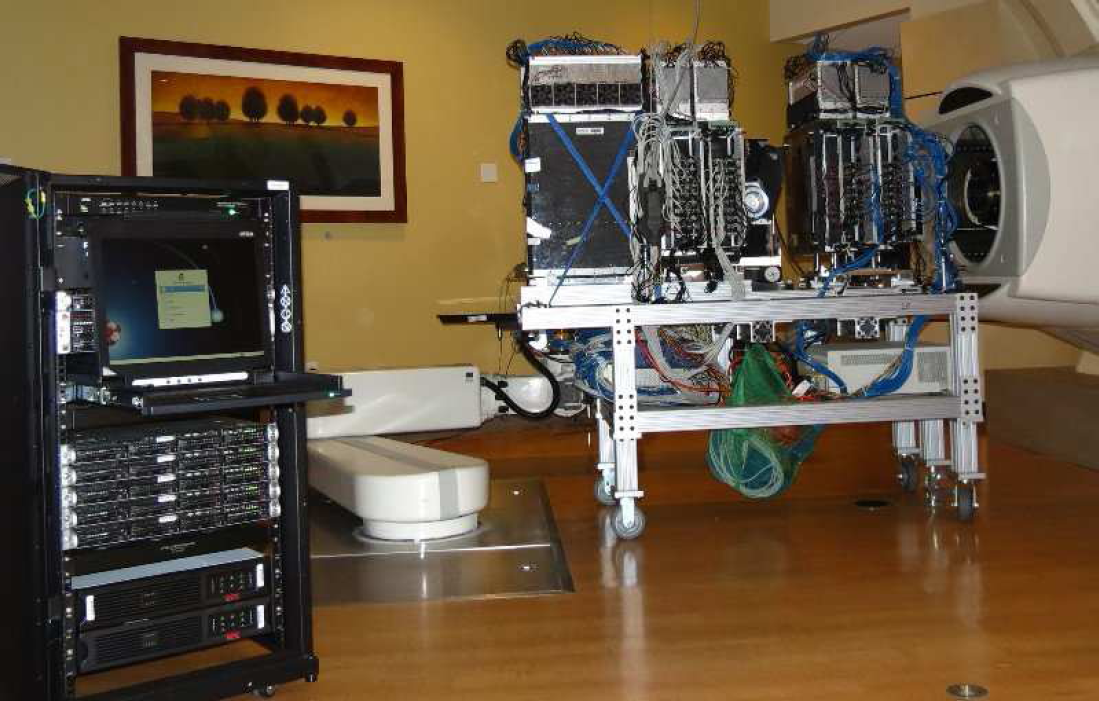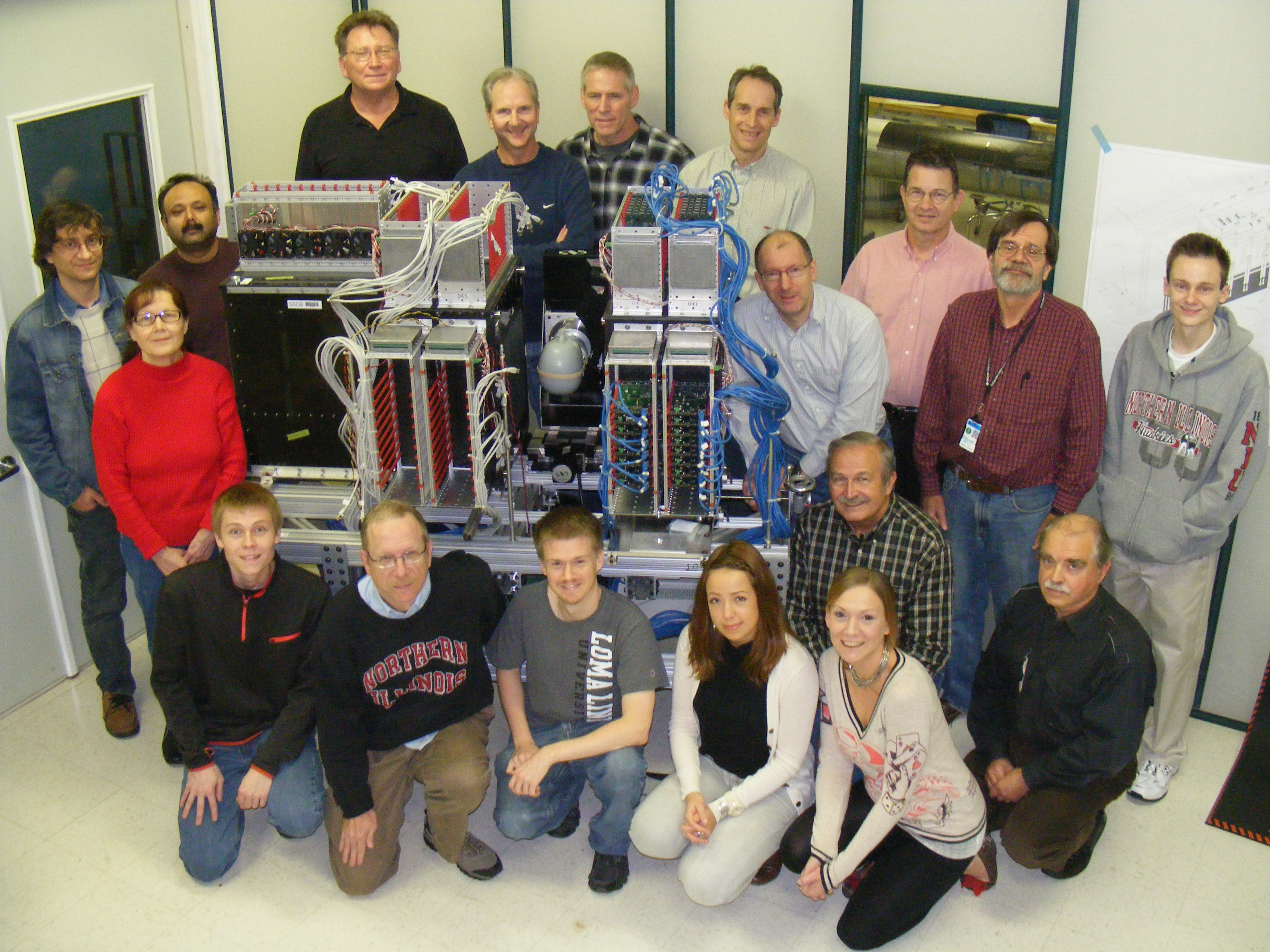The pCT scanner project at NIU
|
In 2011-2015 I worked with the NIU’s proton computed tomography (pCT) group and was
primary responsible for developing the Back-End data acquisition system (DAQ) for a new pCT scanner.
The scanner provides data for reconstruction of medical images for proton therapy, using position
and energy measurements of protons passing trough an object under studies.
Contributions to the project
- DAQ software and analysis.
- Development of a proton Computed Tomography (pCT) Scanner at NIU“, Proceedings of the XIII New Trends in High-Energy Physics, p.152-157, Alushta, Crimea, Ukraine, ISBN 978-966-02-7015-2 (2013).
- "A New Proton CT Scanner", Presentation at the 23rd International Conference on the Applic ation of Accelerators in Research and Industry, May 27, 2014, San Antonio, TX, arXiv:1409.0049 [physics.ins-det] ..
- Proceedings of the 2015 IEEE Nuclear Science Symposium and Medical Imaging Conference (NSS/MIC), San Diego, CA, 2015, pp. 1-2. doi: 10.1109/NSSMIC.2015.7582123.
- Presentation at the CAARI-2016, Nov 1, 2016, Fort Worth, TX.
- ”Calibration and GEANT4 Simulations of the Phase II Proton Compute Tomography (pCT) Range Stack Detector“, FERMILAB-TM-2617-AD-CD-E (2016).
|
- NIU pCT team. December 2014.
|
DAQ description
|
The system:
- collects input from the the FPGA-based Front-End electronics boards (digitized signals from the fiber tracker planes and from the range stack detector)
- combines front-end data into events (a proton track associated with energy deposition in the calorimeter)
- provids monitoring and selection of events suitable for the image reconstruction
- formats and transfers selected events to the image reconstruction computer cluster
A mobile DAQ cluster consist of six collector nodes operated under CentOS
Linux. The six worker nodes provided 24 input
channels to collect Front-End data (UDP data streams), 72 CPU cores (running at 2.6 GHz) for
the data processing and 9 TB disk storage space. All nodes were interconnected with 2 Gbit/s
internal network . The head node ran cluster management software and was remotely accessible
from an operator desktop in the facility control room. This DAQ system was able to accept
data at instant rate up to 50 MB/s per input stream with error rate less than 0.06%.
;
|
- Fully assembled DAQ cluster system (left) and proton CT scanner (right) at CDH Proton center. From right to left, beam enters upstream tracker planes followed by downstream tracker planes and finally the calorimeter. The gap in the middle is where the rotation stage for rotating the head phantom in the horizontal plane is placed.
|
Links
pCT collaboration, Santa Cruz Institute for Particle Physics.

